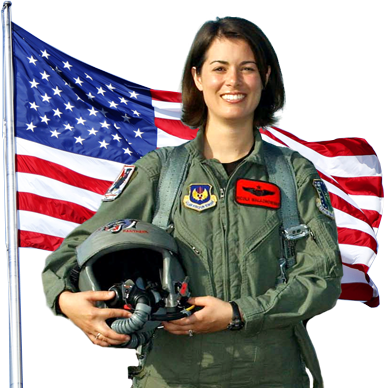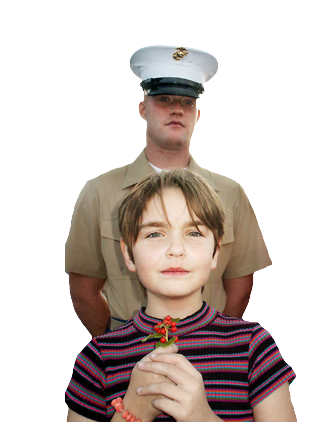Military Technology
- Details
- Hits: 10374
 President Donald J. Trump and Defense Secretary Pete Hegseth brief reporters at the White House, March 21, 2025.
President Donald J. Trump and Defense Secretary Pete Hegseth brief reporters at the White House, March 21, 2025.
PENTAGON, (March 21, 2025): During a press conference at the White House today, President Donald J. Trump and Defense Secretary Pete Hegseth announced that the Air Force would proceed with the production of the Next Generation Air Dominance fighter jet platform.
Intended to eventually replace the Air Force's fleet of F-22 Raptors, the NGAD platform is a network-connected family of systems — including a stealth fighter jet component, drone technology and others — that simultaneously interact to ensure air superiority.
Read more: TRUMP, HEGSETH ANNOUNCE AIR FORCE'S NEXT GENERATION FIGHTER PLATFORM
- Details
- Hits: 23288

EXECUTIVE ORDER, (January 27, 2025): By the authority vested in me as President by the Constitution and the laws of the United States of America, including my authority as Commander in Chief of the Armed Forces of the United States, it is hereby ordered:
Section 1. Purpose. The threat of attack by ballistic, hypersonic, and cruise missiles, and other advanced aerial attacks, remains the most catastrophic threat facing the United States.
- Details
- Hits: 18993
 Sailors of the Keyport Dive Locker prepare two divers for a training session in the bay outside the locker at Naval Undersea Warfare Center Division Keyport, Wash., Sept.9, 2024. Photo by Air Force Staff Sgt. Eugene Oliver
Sailors of the Keyport Dive Locker prepare two divers for a training session in the bay outside the locker at Naval Undersea Warfare Center Division Keyport, Wash., Sept.9, 2024. Photo by Air Force Staff Sgt. Eugene Oliver
Pentagon, (January 17, 2025): On a blustery, cool autumn day, two divers at Naval Undersea Warfare Center Division Keyport, Washington, donned wetsuits, helmets and a tangle of hoses to hop into Liberty Bay for routine training. Four fellow divers from the Keyport Dive Locker circled them to make sure all the various pieces of equipment were hooked up and working correctly.
It wasn't a necessary training, but one that couldn't hurt considering the missions the sailors of the Dive Locker are called to perform.
Read more: TORPEDO TESTS, SALVAGE & MORE: SPEND A DAY AT NUWC DIVISION KEYPORT'S DIVE LOCKER
- Details
- Hits: 23516
 An illustration shows an M1 Abrams tank firing its weapon. Graphic illustration by Regina Ali, DOD
An illustration shows an M1 Abrams tank firing its weapon. Graphic illustration by Regina Ali, DOD
Pentagon, (Dec. 12, 2024): The electromagnetic spectrum is required for nearly every aspect of space-based communications, from satellite-to-satellite to satellites-to-soldiers on the ground. Ensuring the spectrum needed for that communication is protected for use by the U.S. and its allies, increasingly means adopting technology developed in the commercial sector.
Over the past few decades, the commercial sector has spent four times as much on research and development than the federal government, including in areas like spectrum management, said Air Force Maj. Gen. Steven J. Butow, the military deputy director of the Defense Innovation Unit, while speaking Wednesday at the Association of Old Crows International Symposium and Convention, just outside Washington.
Read more: COMMERCIAL TECH AT HEART OF FUTURE DEFENSE SPECTRUM MANAGEMENT
- Details
- Hits: 598
Pentagon, (Oct. 29, 2024): Microchips enable virtually every military system, from ships, planes, tanks, long-range munitions, radar and communication gear to night vision, satellites, sensors — making them vital to the Defense Department.
Deputy Secretary of Defense Kathleen Hicks spoke today to industrial, government and academic leaders at the 2024 Microelectronics Commons Annual Meeting in Washington.
"Every day, from the Indo-Pacific to the North Atlantic to the Middle East and beyond — from the ocean floor to outer space to cyberspace — as American warfighters stand the watch, they depend on chips to help them defend our country, our allies and partners, and our interests," Hicks said.
Read more: WITH INDUSTRY HELP, DOD STRIVES TO BE LEADER IN MICROCHIP RESEARCH, PRODUCTION






